Shizuoka: 20 Things to Do and Scenic Places to Visit

Shizuoka is located close to Tokyo and is most famous for being home to Mt. Fuji, the symbol of Japan. We introduce 20 places to visit and things to do in Shizuoka, from scenic locations like the Jogasaki Coast and Lake Hamana to museums, hot springs, and more!
Shizuoka: Famous for Mount Fuji and Green Tea
To many, Shizuoka prefecture is best known as the home of Mt. Fuji, Japan's most prominent national symbol and a World Heritage site.
Shizuoka is also famous for its green tea production. There are hundreds of tea fields throughout the prefecture, and many spots to enjoy freshly brewed green tea all year round.
However, there is so much more to see and do in Shizuoka! Here are twenty must-visit places in the nature-rich, exciting prefecture of Shizuoka - many of which can easily be visited on a day trip from Tokyo!
20 Must-Visit Spots in Shizuoka
1. Mt. Fuji Viewing
2. Lake Hamana
3. Kawazu and Minamiizu Yumigahama
4. Kakegawa Castle
5. New York Lamp Museum and Flower Garden
6. Suruga Bay
7. The Izu Teddy Bear Museum
8. The Jogasaki Coast
9. Atami Onsen
10. Oigawa Valley
11. Mishima Skywalk
12. Izu Shaboten Zoo
13. Miho no Matsubara
14. Gotemba
15. Perry Road
16. Shimoda Ropeway
17. The Museum of Musical Instruments
18. Kanzanji Ropeway
19. Yume no Tsuribashi Bridge
20. Inatori Onsen
1. Mt. Fuji Viewing

Playground in Shizuoka City
As home to Mt. Fuji, there are numerous places to enjoy incredible views of the internationally loved mountain in Shizuoka. Shizuoka is even home to the Fujinomiya Trail, one of the major Mt. Fuji hiking trails.
Shizuoka City itself is a great place to see Mt. Fuji. For even more unforgettable scenery, head to Miho no Matsubara (Miho Beach), a place that offers wonderful views of the seacoast with Mt. Fuji in the background.
Miho no Matsubara
Location: Shizuoka, Shimizu Ward, Miho
Business hours: Open 24 hours
Official website: https://miho-no-matsubara.jp/
2. Lake Hamana and Flower Scenery

Located in western Shizuoka Prefecture, Lake Hamana (Hamanako) is renowned for its incredible seasonal flowers. One particularly popular spot is Hamamatsu Flower Park, where cherry blossoms, azaleas, roses, wisteria, rhododendrons, irises, and hydrangea flowers bloom from spring through fall each year.
Lake Hamana and the surrounding parks can easily be accessed from JR Hamamatsu Station, which is located one and a half hours from both Tokyo and Kyoto via Shinkansen. Utilize the Japan Rail Pass to travel efficiently.
Hamamatsu Flower Park
Location: Shizuoka, Hamamatsu, Chuo Ward, Kanzanjicho
Business hours: Open 24 hours
Official website: https://e-flowerpark.com/
3. For Cherry Blossom and Starry Sky Lovers: Kawazu and Minamiizu Yumigahama

A visit to Kawazu in Shizuoka during February and early March reveals a unique vision of Japan's sakura blossoms. There, the sight of thousands of pink cherry blossoms blooming alongside the river draws guests as an early sign of spring.
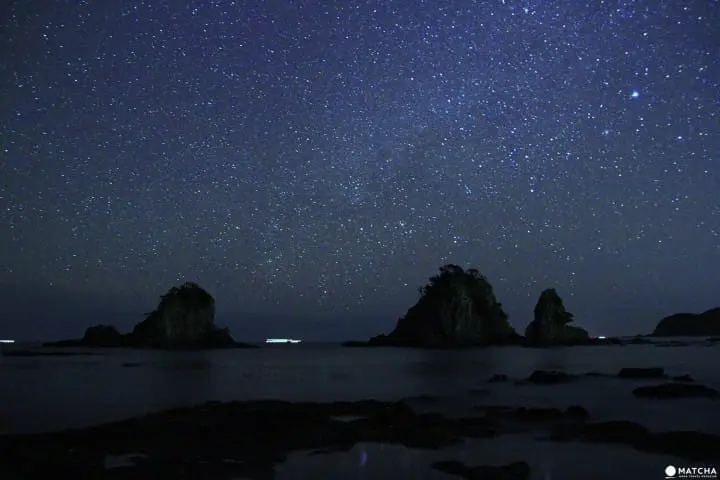
In Minamiizu Yumigahama, visitors can see the Winter Diamond constellation while stargazing into a crystal-clear night sky as the weather cools down towards the end of the year.
Kawazu and Minamiizu Yumigahama
Location: Shizuoka, Kamo District, Kawazu, Sasahara
Business hours: Open 24 hours
Official website: https://kawazuzakura.jp/
Read also
4. Kakegawa Castle - An Authentic Reproduction from 1664

While there are plenty of replicas of Japanese castles to see around the country, Kakegawa Castle is not considered a replica, but a reproduction.
The entirety of the castle has been rebuilt based on existing historical documents. There are no wide staircases or elevators inside, but authentically recreated wooden ladder-like stairs, holes in the walls where archers would shoot approaching enemies, and other features sure to delight any Japanese history buffs. This castle is a must for anyone interested in Japanese history, architecture, or samurai lore.
Kakegawa Castle
Location: Shizuoka, Kakegawa
Business hours: 9:00 - 17:00
Official website: https://kakegawajo.com/
5. New York Lamp Museum and Flower Garden

Picture courtesy of PR Times
The New York Lamp Museum and Flower Garden is a picturesque retreat for enthusiasts of stained glass art and floral beauty. Explore a blend of art nouveau-inspired displays, featuring exquisite stained glass windows and iconic Tiffany lamps set against a backdrop of blooming seasonal flowers.
In June, the museum hosts magnificent garden displays, particularly captivating during the rainy season. Witness the enchanting Umbrella Sky exhibit, where vibrant colors adorn pathways amidst a diverse array of more than 200 lush hydrangea species, creating a truly mesmerizing experience.
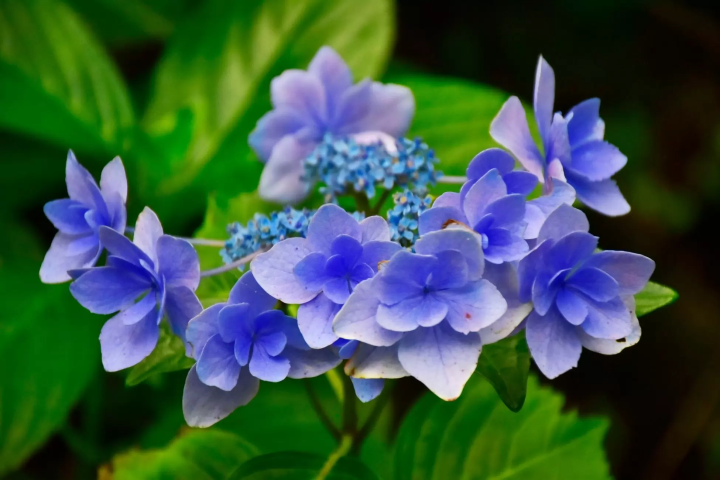
Picture courtesy of PR Times
Explore an array of exquisite hydrangea cultivars such as Annabel and Dance Party, set amidst traditional Japanese umbrellas in vivid shades of purple and blue, creating picturesque backdrops for unforgettable moments captured in photos.
6. Suruga Bay - Savor Sakura Shrimp Fresh From the Harbor

Sakura shrimp are a small, brightly colored species of shrimp found in a very limited habitat range. Suruga Bay, in Shizuoka Prefecture, is one of the few places on earth where these prized seafood thrive. Sakura ebi are shipped from this area all around Japan, which means that if you want to enjoy the absolute freshest sakura shrimp, you'll have to make the trip.
Sakura shrimp are used in tempura, soba and udon, salads, and many other traditional Japanese dishes, including some only found in Shizuoka. These petite, crunchy shrimp have more texture than flavor and are especially popular in the spring when they echo the color of blooming cherry blossoms.
7. The Izu Teddy Bear Museum - A Museum For All Ages

When you first visit the Izu Teddy Bear Museum, you may feel as though you've traveled out of Japan and into Europe, thanks to the red-brick architecture of the buildings. However, the sensibilities and rationale behind the museum express a decidedly Japanese concept.
The Izu Teddy Bear Museum is home to some of the world's oldest and most unique teddy bears and is conveniently located in Izukogen, one of Shizuoka's most popular resort areas.
The Izu Teddy Bear Museum
Location: Shizuoka, Itō, Yawatano
Business hours: 9:30 - 17:00
Official website: https://www.teddynet.co.jp/
8. Jogasaki Coast - A Stunning Coastline
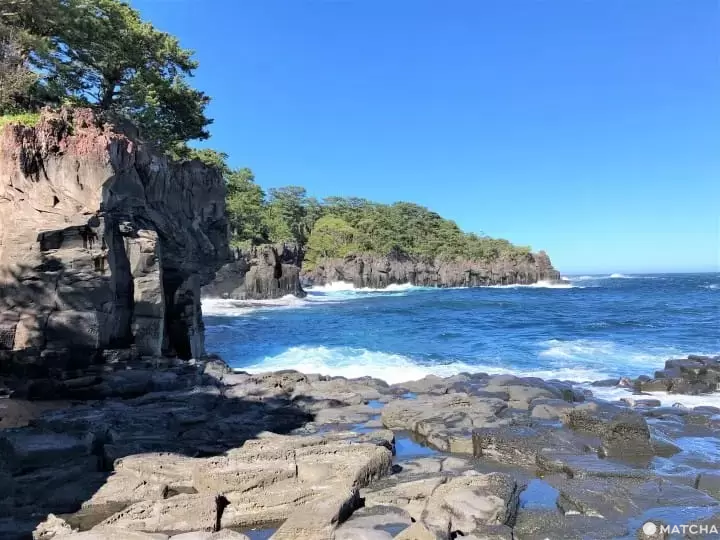
Hiking and trekking fans are sure to love the Jogasaki Coast in the Izu Peninsula. It is a rare and stunning example of Japan's geography, where you can enjoy unspoiled ocean, mountain, and forest views without straying too far from civilization.
If you're feeling adventurous, athletes are invited to try the ambitious feat of a bike excursion from Tokyo to Ito in the Izu Peninsula.
Jogasaki Coast
Location: Shizuoka, Itō, Futo
9. Atami - Luxuriate in One of Japan's Best Known Resorts

Atami is a seaside hot spring town in Shizuoka, and thanks to its onsen, has become one of the best-known and most popular resorts in Japan. While this might make it sound crowded, Atami is also very laid back and a restful place to visit. It is located just half an hour from Tokyo Station via Shinkansen.
Here, you'll find flower gardens, a historical castle, shrines, art museums, beaches, and, of course, plenty of hot springs to enjoy all year long.
10. Oigawa Valley - Ride on a Steam Locomotive Train

Oigawa River Valley offers some of the most beautiful views in Shizuoka, all the more splendid when viewed from the window of a 1930s-era steam locomotive.
The steam engine that runs from Shin-Kanaya Station up the river to Senzu Station is one of the main attractions of the area. Once in Senzu, you can sample some of the best tea in Shizuoka and local delicacies.

Senzu Station is also home to the museum dedicated to Thomas and Friends, a train-themed facility that is loved by children and adults. Visitors can actually ride the Thomas and Friends trains or take fun pictures of them.
Senzu Station
Location: Shizuoka, Haibara District, Kawanehon, Senzu
Official website: https://oi-river-trip.com/en/enjoy/
11. Mishima Skywalk - Japan's Longest Pedestrian Suspension Bridge

Mishima Skywalk spans 400 meters of Shizuoka’s enchanting mountain scenery, making it the longest pedestrian suspension bridge in Japan. On clear days, the bridge offers breathtaking views of Mt. Fuji and Suruga Bay.
However, the area really lights up during the rainy season, when clear views of the holy mountain become scarce. From June to July, the Mishima Skywalk path hosts Shizuoka’s hydrangea festival. 13000 plants and over 200 species, including some found only in this area, burst into clouds of pink, blue, and white thanks to the abundant rain this time of year.
For the height averse, the bridge can be enjoyed from the observation deck area, where shops sell themed snacks during festival season, and an exhibition house displays flowers all year long.
Mishima Skywalk
Location: Shizuoka, Mishima, Sasahara Shinden
Business hours: 9:00-17:00
Official website: https://mishima-skywalk.jp/
12. Izu Shaboten Zoo

Izu’s four-legged residents at the Izu Shaboten Zoo love onsen. During the winter, the zoo’s capybaras draw crowds with their charming mikan-balancing act as they enjoy a hot spring bath made just for them.
This area hosts another beloved curiosity: The New York Lamp Museum and Garden, where guests can enjoy art nouveau and Tiffany stained glass lamps. Inside, Shizuoka’s impressive hydrangeas are made even more magical by the colorful glow of antique lamps.
13. Miho no Matsubara

With its crystalline coastline, distant views of Mt. Fuji, and prominence in Japanese art and poetry, the Miho Pine Forest holds a special significance. The area is considered one of the most important scenic views in the country and is a recognized UNESCO site.
The legend of the swan maiden, a dedicated Noh festival held in October, and the mysticism of Miho shrine and its sacred pines have maintained this area’s reputation as a must-visit in Shizuoka.
Miho no Matsubara
Location: Shizuoka, Shimizu, Miho
Business hours: Open 24 hours
Official website: https://miho-no-matsubara.jp/
14. Gotemba - A Land of Leisure

Gotemba may be inextricable from the Mt. Fuji climbing course that takes its name, but this area’s biggest draw is actually its outlet mall. Gotemba Premium Outlets offers domestic and international fashion brands at wallet-friendly prices.
The outlet has enough amenities to make it feel like a shopper’s paradise, but nearby Gotemba Kogen Resort boasts even more expansive leisure and dining options, plus seasonal events. The resort is also home to a winery and brewery.
The area's pure subterranean waters make it ideal for producing spirits. At the Kirin Mt. Fuji distillery, tours unveil the secrets of the Japanese whiskey that has taken the world by storm.
Gotemba Premium Outlets
Location: Shizuoka, Gotemba, Fukasawa
Business hours: 10:00 - 20:00
Official website: https://www.premiumoutlets.co.jp/gotemba/
15. Shimoda - Admiral Perry's Legacy

Photo by Pixta
Thanks to the arrival of Admiral Perry's Black Fleet, Shimoda was the first port where foreign, specifically American, ships could dock and trade. Recreations of these boats sail daily, giving visitors a taste of Shimoda’s early days.
Walk the streets of Perry Road to be transported back in time through historical monuments and traditional architecture. Statues of important figures decorate the town, while cultural spaces such as the temple where Admiral Perry signed his revolutionary trade agreement with Japan are well-preserved historical sites.
Shimoda Perry Road
Location: Shizuoka, Shimoda, Sanchome
16. Shimoda Ropeway- View Shizuoka from Up High

Photo by Pixta
Guests can take the trip up the Shimoda Ropeway to Mt. Nesugatayama, where stunning ocean views recreate the scenery of Perry’s approach. At the top, an old lookout spot has been recreated to transport visitors back to the age of Perry’s visit, when vigilant guards kept Shimoda’s ports safe.
Views of Izu’s seven islands, the city of Shimoda, and the surrounding mountains are scenes that captured the hearts of early Western traders. Every step brings guests closer to the early days of foreign presence in Japan, right down to the model cannons that would have kept enemies at bay.
Shimoda Ropeway
Location: Shizuoka, Shimoda, Higashihongo
Business hours: 8:45 - 17:00
Official website: https://www.ropeway.co.jp/wp/
17. Hamamatsu Museum of Musical Instruments

After Admiral Perry paved the way for Western influence in modern Japan, Shizuoka’s industries shifted. In the late 1800s, the start of the Yamaha company established Hamamatsu as Japan’s musical center.
The Museum of Musical Instruments in Hamamatsu is home to 3300 instruments, 1500 of which are visible in open-air displays at any time. This is Japan’s only musical instrument museum and features instruments from around the globe, including antique, ceremonial, and even modern electronic exhibits. A listening corner brings the experience to life.
Hamamatsu Museum of Musical Instruments
Location: Shizuoka, Hamamatsu, Chuo Ward
Business hours: 9:30 - 17:00
Official website: https://www.gakkihaku.jp/
18. Hamana Lake and Kanzanji Ropeway

Kanazaji Ropeway is another example of Hamamatsu’s sightseeing spots that are the only of its kind in the nation. This ropeway spans Lake Hamana, offering views of the glittering blue water from above and culminating in a music box museum atop Mt.Okusa.
Kanzanji Temple, located on the mountain, has long been a pilgrimage spot for those looking for love and wishing for happiness in their relationships. The temple has been patronized by locals since 810, and the famous matchmaking jizo were introduced in the Meiji period.

The lake itself has popular areas for eating Unagi and a stunning bright red bridge, which makes an impressive photo-op against the blue sky and water.
Hamana Lake and Kanzanji Ropeway
Location: Shizuoka, Hamamatsu, Kanzanjicho, Chuo Ward
Business hours: 10:00 - 16:30 (17:30 on Weekends, closed on Tuesdays)
Official website: https://www.kanzanji-ropeway.jp/
19. Yume no Tsubashi Bridge and Sumata Gorge
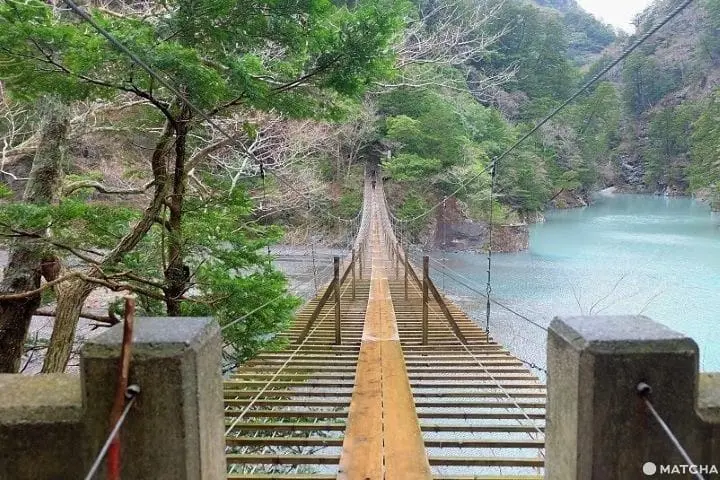
Yume no Tsubashi suspension bridge embodies a very different piece of Japan’s culture, recalling the ancient ways of mountain life. The Sumatakyo Onsen area is known for its nostalgic features, including an operational steam locomotive.
Due to abnormal weather, Sumata Gorge’s appearance has changed significantly in recent years. Still, crossing this wooden suspension bridge and gazing at the emerald lake below gives travelers a new appreciation for Japan’s deep connection to nature.
Yume no Tsubashi Bridge and Sumata Gorge
Location: Shizuoka, Senzu, Kawanehon, Haibara District
Business hours: 6:00 - 18:00
Official website: https://yumenotsuribashi-sumatakyo.com/ (Japanese)
20. Inatori - Hot Springs and Hina Dolls

Photo by Pixta
Inatori Onsen blossoms in the spring, where Izu’s early-blooming sakura are complemented by hanging Hina doll decorations.
Inatori Onsen’s agricultural and fishing industries have been both a blessing and a curse. While the area is rich in fresh, delicious cuisine, the local people historically lacked the funds for lavish Hina Matsuri displays. With a spark of ingenuity, they developed petite, hand-sewn dolls that could be hung from strings and symbolized their wishes for happy, healthy daughters.
Seasonal displays are visible from January to late March, but the Hina Halls at Inatori Cultural Park and Mukai-an keep the traditional alive year-round.
Inatori Onsen
Location: Shizuoka, Kamo, Higashiizu, Inatori
Business hours: 9:00 - 17:00
Official website: https://inatorionsen.or.jp/facility/hinanoyakata/
Dining in Shizuoka

Photo by Pixta
Pure water, a great climate, and resplendent nature have dealt Shizuoka a lucky hand in terms of dining. In Hamamatsu, where Japanese eel has long been fished from Lake Hamana, and unagi farming was invented, kabayaki unagi is king. These sticky-sweet and savory eel fillets glisten over rice with a sprinkle of fragrant, numbing sansho.
Hamamatsu gyoza speaks to Shizuoka’s long history of foreign engagement, turning Chinese dumplings into one of Japan’s favorite bar foods. These savory pork and cabbage potstickers washed down with a pint of locally brewed beer is a meal not soon forgotten.
Shizuoka's underground rivers and clean water also make it ideal for brewing whiskey, with the Asahi Fuji brewery drawing crowds daily for tastings and tours. Like whiskey, wasabi requires pristine water to grow. Shizuoka’s wasabi farms are even recognized as world-heritage agricultural sites. Wasabi pickles are well-known souvenirs with a funky-spicy flavor that enhances the nuances of Japan’s domestically produced spirits.

Photo by Pixta
For a lighter bite, unagi pies with flaky dough and a flavor likened to salted caramel or steamed bean paste dumplings from Atami, called onsen manju, make the perfect complement to Shizuoka green tea. The region is so well known for tea production that multi-generational tea farms offer picking and processing experiences to guests and open their facilities to the public.
Read also
FAQ
Why is Shizuoka famous?
Shizuoka Prefecture in Japan is celebrated for its diverse attractions that draw visitors from far and wide. The region's fame stems from its close association with Mount Fuji, boasting stunning views and serving as a gateway for climbers. Shizuoka's reputation as a prominent green tea producer highlights its contributions to Japan's tea culture, with lush plantations offering high-quality leaves. Sites like Miho no Matsubara, a UNESCO World Heritage site, showcase the prefecture's natural beauty and provide panoramic vistas of Mount Fuji. Shizuoka's hot spring resorts, including popular spots in Atami and Ito, offer rejuvenating experiences in soothing mineral-rich waters against scenic coastal backdrops. Culinary enthusiasts flock to Shizuoka for its seafood delicacies and local specialties like "Sakura ebi" (cherry shrimp) and renowned wasabi. These diverse offerings make Shizuoka a captivating destination, blending natural splendor, cultural heritage, gastronomic delights, and relaxation opportunities, offering a multifaceted and enriching experience for travelers.
Is Shizuoka City worth visiting?
In addition to the venues and experiences listed above, Shizuoka City, the capital of Shizuoka Prefecture in Japan, offers a compelling array of attractions that make it a destination worth visiting. From the historic Shizuoka Sengen Shrine honoring Mount Fuji's guardian deity to the sweeping views of Mount Fuji and Suruga Bay from Nihondaira plateau, the city boasts captivating sights for nature enthusiasts and history buffs alike. Visitors can immerse themselves in the region's tea culture with visits to lush tea plantations or explore family-friendly entertainment at the Shizuoka Municipal Nihondaira Zoo. Culinary adventures await with fresh seafood from Suruga Bay, Shizuoka's famed wasabi, and delectable local dishes like grilled eel. Combining cultural richness, natural beauty, and culinary delights, Shizuoka City is a charming and diverse destination offering a blend of traditional charm and modern attractions for travelers to enjoy.
What food is Shizuoka Prefecture famous for?
Shizuoka Prefecture in Japan is celebrated for its distinctive culinary delicacies that reflect the region's rich food culture and natural bounty. Renowned as a top green tea producer, Shizuoka's high-quality tea leaves are coveted for their fresh aroma and exceptional flavor profile. The prefecture is also famous for its premium wasabi, thriving in its cool climate and pristine water sources, providing the ideal conditions for cultivating this pungent condiment. Local specialty sakura ebi, or cherry shrimp, add a touch of sweetness and color to Shizuoka's gastronomy, while the region's delicious grilled unagi (eel) showcases the mastery of local fishing and aquaculture industries. These signature foods capture the essence of Shizuoka's culinary heritage, deeply rooted in tradition and connected to the region's natural resources.
Can you see Mt. Fuji from Shizuoka?
Yes, it is possible to see Mount Fuji from many areas in Shizuoka Prefecture. Due to Shizuoka's proximity to the iconic mountain, there are several locations within the prefecture that offer stunning views of Mount Fuji on clear days. Areas like Nihondaira, a scenic plateau known for its panoramic vistas, and spots along Suruga Bay provide excellent vantage points for observing the majestic beauty of Mount Fuji. Additionally, certain coastal areas and elevated viewpoints in Shizuoka show off Japan's highest peak from a distance, making the prefecture a prime location for experiencing the grandeur of Mount Fuji.
How to get around Shizuoka?
Getting around Shizuoka Prefecture in Japan is made convenient by its well-connected transportation network. Travelers can utilize the efficient JR train lines, including the Tokaido Shinkansen, which links Shizuoka to major cities like Tokyo and Osaka. Local and regional train services, as well as buses, offer access to various destinations within the prefecture. Taxis provide a flexible option for urban travel, while rental cars are useful for exploring more remote areas. In urban centers, bicycles are a popular and eco-friendly mode of transportation, allowing visitors to maneuver through cities and towns easily. By combining these transportation options, visitors can navigate Shizuoka's diverse landscapes, cultural sites, and attractions with flexibility and convenience, ensuring a smooth and enjoyable travel experience throughout the prefecture.
Enjoy Your Time in Shizuoka!
If you are looking for the perfect day trip from Tokyo, one of these spots in Shizuoka is sure to meet the mark. The mountainous areas of Shizuoka, including the Oigawa River Valley, are cooler than other areas of Japan, while ground-fed hot springs stay steamy year-round, making Shizuoka a great destination for summer or winter trips.
So why not hop on the Shinkansen and see what you'll discover in Shizuoka?
This is the official account of MATCHA's editorial department. Our articles feature useful travel information for visitors to Japan, from how-to guides to recommended places to visit.




















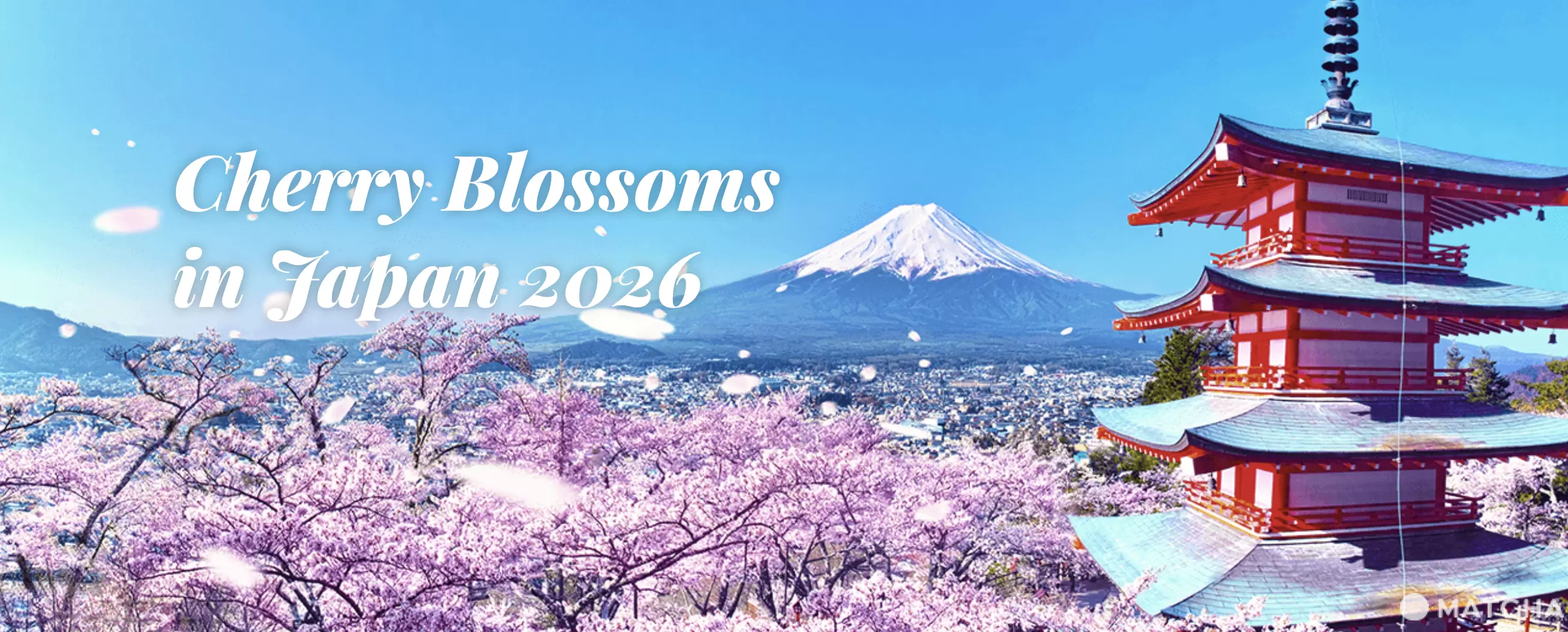


































![[Kanazawa] Enjoy the world of gold leaf to the fullest in the city with the highest production volume in Japan](https://resources.matcha-jp.com/resize/720x2000/2025/11/12-249564.webp)
![[2026] Family Winter Trip to Suzuka Circuit! – For Both Day trips and Overnight Stays!](https://resources.matcha-jp.com/resize/720x2000/2025/12/26-254097.webp)
![[Northern Okinawa] 4 Recommended Cosmos Fields in Okinawa | Sunflowers and Cherry Blossoms in the Same Season!](https://resources.matcha-jp.com/resize/720x2000/2024/08/12-192028.webp)

